Do you want your students to use a particular library database? Read an article? Watch a video clip? Browse an e-book? Give them a URL that will send them straight to that resource!
Adding the proxy server prefix to the resource URL gets your students to the full content, regardless of whether they are on campus or at home.
Access to database content licensed by the library is possible from outside the college ONLY by way of our proxy server. The proxy server enables access for all QC students, faculty, and staff by requiring sign in using an active QCard library barcode.
To enable off-campus access to resources you will need to include the library's proxy prefix BEFORE the permanent URL of any library licensed content (i.e.: a database, an article, an e-book, or a video clip). Once added, the prefix will activate the log-in script when clicked and the user will be asked to enter their QCard library barcode. After that information is entered successfully, the licensed content item will appear on screen.
Our proxy server prefix address: http://queens.ezproxy.cuny.edu:2048/login?url=
Example: To provide access to the JSTOR database (http://www.jstor.org) use:
http://queens.ezproxy.cuny.edu:2048/login?url=http://www.jstor.org
This URL can now be pasted into an email, onto a website or blog, onto Facebook, Twitter, etc.
Pro-tip: Always test your links before disseminating them! If a link does not work, contact kenneth.rosenberg@qc.cuny.edu for assistance.
Articles in most library licensed databases have permanent URLs, or "permalinks". Often the URL shown in the address bar at the top of the screen is temporary and will expire or experience "link rot".
To avoid this situation, look around the item's record to find the field labeled "permalink" or "permanent URL".**
Example 1: EBSCO databases call permanent linking options "permalinks". Look for this icon on the bottom right:
Example 2: JSTOR calls call permanent linking options "stable URLs". Look for this language at the top of the page:
Example 3: Lexis-Nexis Universe has a "copy document link" icon for permanent links. Look for this icon in the toolbar:
**If there is no such field, then, and only then, use the URL shown in the address bar. If you are unsure, contact kenneth.rosneberg@qc.cuny.edu.
The Library makes agreements with electronic content providers. We pay them money and negotiate certain terms for our users. The terms of the contracts we sign generally allow us to provide remote access to students, faculty and staff of Queens College College; but we must ensure that only Queens College users can access the content. We use our proxy server to distinguish Queens College users and enable them to access library databases and other digital, licensed content.
